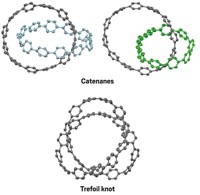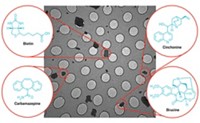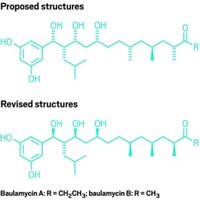Advertisement
Grab your lab coat. Let's get started
Welcome!
Welcome!
Create an account below to get 6 C&EN articles per month, receive newsletters and more - all free.
It seems this is your first time logging in online. Please enter the following information to continue.
As an ACS member you automatically get access to this site. All we need is few more details to create your reading experience.
Not you? Sign in with a different account.
Not you? Sign in with a different account.
ERROR 1
ERROR 1
ERROR 2
ERROR 2
ERROR 2
ERROR 2
ERROR 2
Password and Confirm password must match.
If you have an ACS member number, please enter it here so we can link this account to your membership. (optional)
ERROR 2
ACS values your privacy. By submitting your information, you are gaining access to C&EN and subscribing to our weekly newsletter. We use the information you provide to make your reading experience better, and we will never sell your data to third party members.
Analytical Chemistry
Crystal-Free Crystallography
Structure: Small, hard-to-crystallize molecules can be held in nanoscale scaffolds and analyzed via X-ray
by Bethany Halford
April 1, 2013
| A version of this story appeared in
Volume 91, Issue 13

Crystals are the preferred material chemists use to determine molecular structure via X-ray crystallography. But when scientists can’t crystallize a substance, or not enough exists to get good crystals, they face a roadblock. Now, researchers have found a way to solve this problem using nanoscale scaffolds to capture the molecules they want to visualize.

\

\
Crystallographically generated image of the natural product miyakosyne A trapped within a crystalline sponge (brown).
In X-ray crystallography, X-rays are shot through a single crystal of a compound. How they bounce, or diffract in crystallographic lingo, reveals the structure of the molecule that makes up the crystal. The technique has helped scientists visualize innumerable molecules, including antibiotics, industrial catalysts, and even artificial sweeteners.
A team led by Makoto Fujita, of the University of Tokyo, in Japan, reports it can use porous metal frameworks with large cavities as “crystalline sponges” that soak up guest molecules within their voids, putting the molecules in an ordered array that can be studied via X-ray crystallography (Nature, DOI: 10.1038/nature11990). The technique works on as little as 80 ng of material.
In one example, the researchers used a zinc-based crystalline sponge to soak up just 5 µg of miyakosyne A, a scarce marine natural product with a central methyl group that had defied stereochemical assignment. Using their crystal-free crystallographic technique, the team was able to identify the compound’s stereochemistry.
“I was really impressed with the miyakosyne A structure,” Jon Clardy, a natural products expert at Harvard Medical School, tells C&EN. The analysis, he notes, used a limited amount of a molecule that’s virtually impossible to crystallize and revealed a very subtle point of stereochemistry.
“There are a lot of researchers consuming much time and money characterizing compounds,” says Yasuhide Inokuma, the report’s first author. “Our method is expected to help them.” Inokuma believes the new technique will be useful in natural products chemistry, food and perfume science, drug discovery, forensic science, and the daily research of synthetic chemists.
At the moment, the crystalline sponges are not commercially available, and the small molecules that can be studied with this technique are limited to those that fit within the sponges’ pores. Inokuma believes that these limitations will be solved in time. Furthermore, he says, “we can design and easily make other crystalline sponges with different sizes and pore environments.” Next, for example, the researchers would like to expand the technique to include protein analysis.
“In this beautiful paper, Fujita nicely demonstrates the power of porous metallo-organic frameworks in the area of X-ray analysis,” comments Joost N. H. Reek, a supramolecular chemistry expert at the University of Amsterdam, in the Netherlands. “If this strategy becomes available for organic chemists, I expect that it will have a major impact on the speed with which natural compounds are identified.”





Join the conversation
Contact the reporter
Submit a Letter to the Editor for publication
Engage with us on Twitter